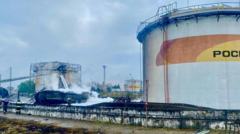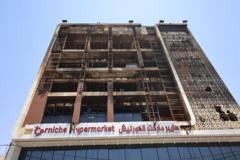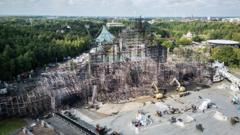The recent investigation into the Heathrow Airport closure exposes alarming lapses in maintenance and infrastructure resilience.
Heathrow Airport Closure: A Systemic Failure Uncovered

Heathrow Airport Closure: A Systemic Failure Uncovered
A report reveals years of neglected maintenance led to Heathrow's lengthy shutdown.
In a shocking report released by British government regulators, the March closure of London's Heathrow Airport—lasting over 12 hours—has been directly attributed to long-standing maintenance oversights. A fire at an electrical substation, triggered by a short circuit in an inadequately maintained transformer, led to more than 1,000 flight cancellations, disrupting travel plans at one of the world's busiest airports.
Detailed investigations revealed that the electrical transformer malfunctioning, specifically attributed to an issue with a bushing—an insulated conductor—was first noted back in 2018. However, this problem went unresolved due to deferred maintenance, culminating in an incident that not only put passengers in a state of chaos but raised critical questions regarding the robustness of the airport's power infrastructure.
The National Grid Electricity Transmission, responsible for operating the substation, last performed any basic maintenance on the crucial transformer in July 2018. Despite several attempts to schedule necessary upkeep, these efforts failed, leading to an immense power loss that crippled the airport's operations and safety systems.
Travelers and aviation officials voiced concerns about the implications for the UK’s electrical grid reliability. The issue was met with immediate concern from political figures, including Prime Minister Keir Starmer, who called for answers regarding the incident and the systemic failures that led to it.
Furthermore, the investigation illuminated deficiencies within Heathrow’s internal power systems, which were unprepared for a significant outage. Reportedly, the airport did not have a plan to utilize power from nearby substations that remained operational during the incident. This lack of contingency left Heathrow vulnerable and revealed that their internal electrical distribution network failed to anticipate and respond quickly following the loss of supply.
The report serves as a wake-up call about the importance of rigorous maintenance and the need to reassess infrastructure resilience in the face of unforeseen disruptions. As questions about future preparedness loom, it is clear that regulatory oversight and systemic improvements are imperative to prevent similar incidents from occurring in the future.





















